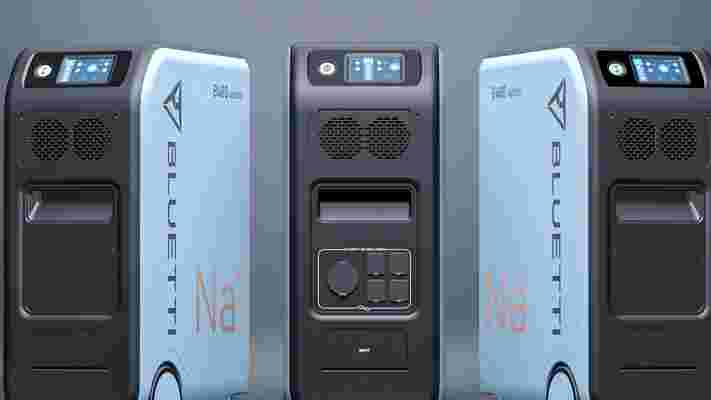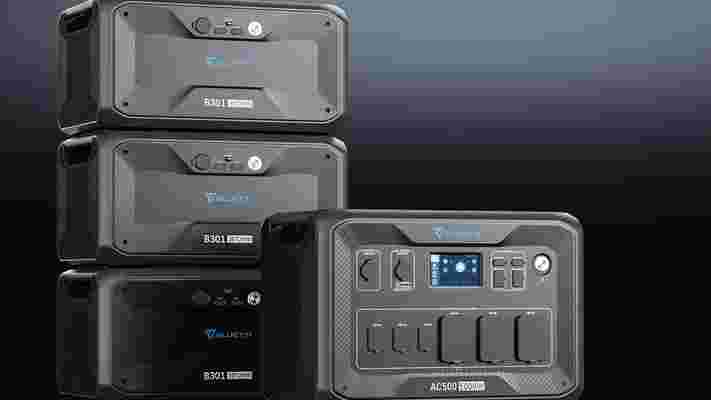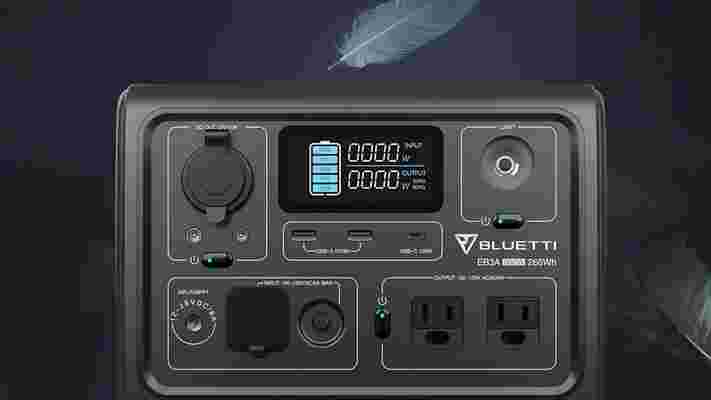Whether you want to take the hard work out of chopping vegetables for salad or as the base for dishes like curry and ragu, or you simply want an appliance that offers a multitude of functions so you can declutter the kitchen countertop of your usual array of gadgets, one of the best food processors can be the savior of the home kitchen.
Food processors may seem like a slightly outdated gadget - in the UK the number of homes with a food processor has fallen to 38% from 50% in 2005, according to Statista . Whereas the ownership of the smoothie makers and the best juicers has increased in the same period.
The reduction in popularity isn’t surprising, not least because the assembly alone can be a mind-boggling task. If you own one of the best blenders or a stand mixer, for example, you may think that a food processor can’t add much to your kitchen or perform any more tasks than your current appliances. But once you understand what these versatile machines are capable of, and how they work, you’ll wonder how you ever managed without one.
Read on to find out just how food processors work, or if you want to get your hands on one of the best food processors right now, check out these great deals for some of the best prices on the market.
What is a food processor?
Food processors are electrical appliances with a base that houses the motor, and then a removable bowl that typically locks into position on top. The bowl usually has a handle and a lid with a tall feed chute to accommodate foods like carrots for shredding and slicing.
Inside the bowl sits one of the number of attachments usually bundled with a food processor, which perform different tasks. Exactly how many and what type of attachments will depend on the model as well as the price, with the more premium, expensive models offering a multitude of different attachments.
The most common attachments are chopping blades, as well as grating and slicing discs. The sharp blades can be used to chop anything from vegetables to meat as well as to mix pancake or cake batters. Grating and slicing discs take the hard work out of slicing up vegetables as well as shredding foods like carrot and chocolate. They can speed through this typically labor-intensive task and create piles of shredded or sliced foods in no time. Perfect for when you need to create large bowls of slaw or salads for a BBQ or potluck.
Other attachments may include a dough blade for mixing firm doughs, like bread dough, or a whisking attachment to whip egg white or thicken cream. Some food processors also come with a blending pitcher making them space saving 2-in-1 appliances. Our article, blenders vs food processors , offers a more in-depth look at how the two appliances differ.

So how does a food processor work?
All of the blades and discs are removable and interchangeable. So, once you’ve decided which attachment you want to use and assembled the food processor, the motor then rotates the attachment at speed. In the case of the sharp chopping blades, they usually sit in the base of the bowl and chop foods as they rotate, they are useful for all kinds of tasks like chopping onions, herbs, and grinding beef.
Grating and slicing attachments are typically large round discs that are assembled so that they sit nearer the top of the bowl. The feed chute in the lid allows you to safely feed foods down the chute towards the slicing and grating discs using a plastic pusher, which means your fingers don’t come close to the dangerous fast-spinning blades. As you push foods down the feed chute, they get shredded or sliced by the fast-spinning disc and all of the sliced or shredded food drops into the bowl below the disc. Some food processors come with more than one size grating or slicing disc so you have the option to create thicker or thinner slices or choose between large or small shredding. Larger grating discs are perfect for shredding carrots and cheese, but a smaller disc will give you beautifully fine shredded chocolate.
Dough blades are plastic blades that aren’t as sharp as the metal chopping blades, so instead of slicing into it, they mix and knead the dough as they spin, they’re ideal for pastry or bread dough. But food processors aren’t as capable of mixing large quantities of dough as a stand mixer. Whisking attachments also rotate at speed to whip air into your cream or egg whites and they are often disc-shaped or have a mesh design as opposed to being more like a hand-held wire whisk.
At a minimum, the food processor will have one speed as well as a pulse button for short sharp bursts of speed, but it’s not uncommon to see models with two or more processing speeds. Many food processors also come with more than one bowl, the smaller bowls are useful for effectively chopping or mixing smaller quantities, they usually sit inside the main bowl and utilize smaller blades.
One of the big benefits of food processors is that they are usually designed with safety in mind. Most can’t be switched on until the lid is firmly locked into position. This helps avoid dangerous situations, but it is also one of the big reasons some people find this appliance tricky to assemble. Locking the bowl into place as well as slotting the lid into position sometimes has to be done in sequence. And unless correctly configured the appliance won’t start, which if you don’t have the manual to hand, can be confusing and frustrating. However, once you know the sequence or the exact way your model locks together it becomes second nature.
Due to the large pitcher-style bowl and sharp blades, you may be wondering if a blender can be used as a food processor or vice versa. Unfortunately, they can’t - partly because food processor lids are not usually leakproof, so it’s not advisable to blend large quantities of liquid-like soups or smoothies in a food processor. The second reason is that blender pitchers are tall and they’re designed to suck all the ingredients towards the blades, whereas food processor bowls are wider and flatter and better designed to evenly chop larger quantities as well as dry ingredients. There are of course some tasks, such as pureeing where you could use either appliance.
Bluetti pioneers portable power with new Sodium-Ion Battery
There’s lots to love about solar energy. First and foremost, it’s better for the environment, but it’s also useful for those who live in more rural areas and need a backup source of power in case of emergency or those who simply like to live life off grid, such as campers, outdoor lovers, tailgaters, roadtrippers, van dwellers and many more.
On the heels of CES, sustainable power provider Bluetti launched a new way to store energy and a series of other exciting products, including its most powerful and most compact power banks to date. Its groundbreaking release: a sodium-ion solar battery in the form of the world’s first sodium-ion solar generator-NA300 and its compatible battery pack - B480 with a powerful 3000w capacity.
Bluetti cited the NA300 as the fastest charging solar generator since it can be recharged from 0% to 80% in 30 minutes (at room temperature) by 6,000W swift AC + PV dual charging.

It can also withstand extremely cold climates as low as -4℉, in which the sodium-ion battery pack in NA300 and B480 has a capacity retention rate of more than 85% and provides a system integration efficiency of over 80%.
When paired with two B480 battery modules (4,800Wh each), it can create a total capacity of 12,600Wh. That’s enough energy to supply the electricity needs of a family of four for several days or even a week in grid failures or natural disasters with recharging by the solar panels.
Sodium-ion batteries are sure to become the way of the future, with an abundant supply of sodium to be tapped as well as more cost effective to its energy counterpart: lithium-based batteries. Sodium-ion batteries can also generally charge faster and operate in much colder temperatures.
Compared to its predecessor, the EP500 Pro, which is based on a lithium LiFePO4 battery, the NA300 has a smaller 3000Wh to 5,100Wh. However, the first-generation sodium-ion battery rivals the LiFePO4 battery cells widely used in other Bluetti products in security and long cycle life except for the low energy density.
The new battery also excels in terms of cost, low-temperature performance, quick-charging, and other electrochemical aspects because of its chemical characteristics.
Another anticipated development from Bluetti is The APEX (AC500), its most powerful modular solar system ever with a 5,000-watt pure sine wave inverter.

Pair it with up to six 6×B301 (3,072Wh LFP per pack) battery modules per unit, for up to 18,432Wh, and you’ll be absolutely blown away with all you can power.
Finally, solar power is more accessible than ever (in size and price) with the extremely compact EB3A with a 600W pure sine wave inverter and 288Wh of LiFePO4 battery pack under the hood, and also supports up to 200 watts of solar input.

The EB3A is also the first model in the sub-3000Wh range that doesn’t need a bulky power brick to charge. One single cable will charge the EB3A at an impressive rate of 600W, 0 to 80% charged in only 20 minutes, making it incredibly easy to take on the go.
Bluetti’s lineup of power banks is more robust than ever to seek whatever your needs and budget may be. Which will you be trying?
Visit bluettipowerom to browse the latest in home generator technology.
How bone conduction headphones work – and why you should try them
Headphones have come a long way over the years and it’s now possible to buy a pair to match and compliment any music style in a dizzying array of designs. Alongside more regular models, bone conduction headphones are a neat variation on the theme and will be of particular interest if you’re a fan of fitness in the great outdoors. In some scenarios they’re also beneficial for certain types of hearing impediments.
Bone conduction headphones are placed right at the top of your cheekbones so vibrations pass through your jawbone, bypassing your eardrums. Sound is passed directly into the cochlea via the bone, rather than using vibrations moving through the air as is the case with conventional headphone designs.
An obvious benefit is that there’s nothing being pushed into your ear canal, but the real appeal with bone conduction headphones is that you can carry on with your outdoor pursuits while also remaining fully able to hear what’s going on around you. And, as mentioned, the fact the sound waves are passing through the bone instead of through your eardrums can also make conduction phones a potential solution for some people with hearing disabilities. Indeed, early hearing aid designs utilised the technology before headphone manufacturers cottoned on the idea.
Thinking about picking up a set of bone conduction headphones? We've rounded up the best deals on our top models right here.
Comfort levels
Another positive that comes with using bone conduction headphones is that, because they’re mounted on the side of your skull, there’s nothing uncomfortable or intrusive sitting on, or in your ears. Earbuds have become the phones of choice for many folks, but they can be intrusive and not entirely hygienic either as you’ll know if you’ve ever owned a pair. Having to reuse earbuds for long periods of time can become a rather unpleasant experience, even if the sound quality still puts you off dispensing with them.
Similarly, many of us prefer the standard old school headphone design, which sits on your head and over your ears. While this style of headphone remains as popular as ever, the downside to these is that they can be bulky to wear and aren’t always suited to outdoor pursuits. Just the way they can move around if you’re doing anything more than a light jog can become irritating in the extreme.

They also cut out external noise, which is a good thing in many ways, but not so hot if you’re keen to know what’s going on around or behind you. Bone conduction headphones aren’t a perfect solution though and they, like any other headphones can cause fatigue if you wear them for too long.
Even the best headphones you can buy aren’t always going to suit everyone. Bone conduction headphones are no different and ideally need to be tried out first to ensure that you get on with them. Buying headphones is a subjective thing and everyone has differing needs, which is probably why the headphone market is as big as it is.
Staying alert
However, the real advantage of bone conduction headphones, unlike many of the traditional headphones you can buy, is that your ears don’t get disconnected from what is going on around you. In fact, because bone conduction headphones don’t sit on or in your ears, they allow you to hear other sounds. That’s obviously going to be very useful if you’re out and about in the field, but still want to know who or what is near you.
It’s also possible to buy bone conduction headphones that have been specifically tailored to different types of activities. So, alongside the more obvious models for running and outdoor pursuits such as cycling it’s possible to purchase bone conduction waterproof headphones designed with swimming in mind.

It’s important to look closely at the specifications for bone conduction headphones though. While many are sweat resistant, you’ll need to purchase a pair that have been designed specifically for swimming needs to ensure they keep on working once you hit the water.
There are also models that have been created with more of a communications angle in mind, so if you need to make and receive calls on a regular basis when you’re out and about a pair of bone conductive headphones with plenty of talk time capability is worth considering.
Ear friendly
Another bonus of bone conduction headphones is that you have less chance of damaging your hearing. It’s easy to overlook or disregard the harmful effects of playing music too loudly, especially when it’s right next to your eardrums. In fact, like many ills, the negative effects are only noticeable after the damage has been done. Bone conduction headphones lessen the impact on your inner ear, simply because they’re externally mounted.
However, bone conduction headphones can still be problematic for your hearing if you overdo the volume, even though they’re not sitting right in your ears. As is the case with most things it’s a case of everything in moderation, so use your bone conduction headphones reasonably and they should return the favor to your hearing.

A sound choice
Bone conduction headphones do have some drawbacks. Users frequently report that audio quality suffers as a result of not being in or on their ears. It’s a reasonable trade-off though, because any loss of audio quality is compensated by allowing the user to hear other things. If you’re out for a jog and like to keep your wits about you then a pair of bone conduction headphones seem like an obvious item of running kit to consider.
The same can be said if you’re in any other scenario where it’s vital to keep an ear out for any external sounds. Many people like to listen to music while they work, which isn't such a big deal if you’re sat at a desk and working from home. However, if you work in a situation where listing to music is permitted but you still need to be alert for whatever dangers, or managers might be at large, then bone conduction headphones could be worth considering.
Which brings us neatly around to the best bone conduction headphones of 2022 guide we’ve compiled that contains a hand-picked selection of the latest and greatest models you can buy. Unsurprisingly, the Aftershokz brand (or Shokz as they’re now known) is one you’ll frequently hear mentioned in relation to bone conduction headphones. They have a great selection to suit a variety of budgets, but you can also get solid offerings from Vidonn, Tayogo and H20 amongst others.
However, the options are less plentiful than you’ll find in the rest of the burgeoning best headphones marketplace. The same goes for the best wireless headphones and best wireless earbuds too. Nevertheless, for some audio requirements using bone conduction headphones makes perfect sense.
This article is part of TechRadar's Get Fit in 2022 series – a collection of ideas and guides to help get your new year's health goals off to the right start, whatever your current level of fitness.